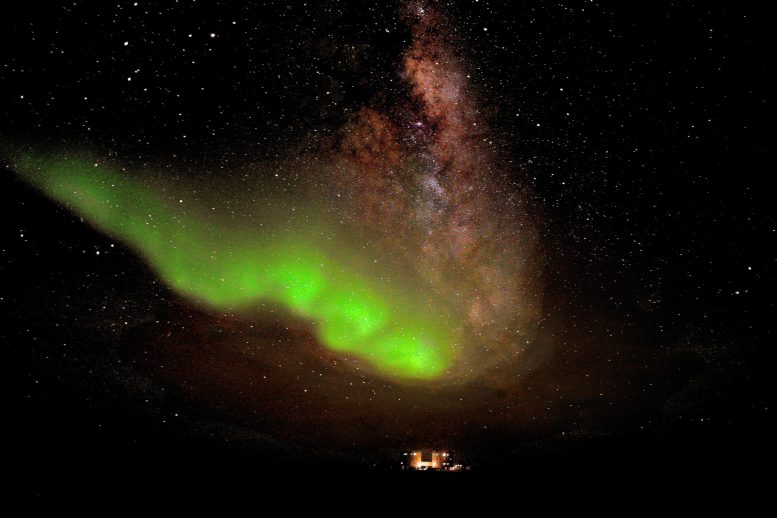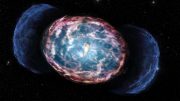
The ethereal green glow of Aurora Australis high over Concordia station on July 18, 2012. It was taken by ESA-sponsored scientist Alexander Kumar and his colleague Erick Bondoux from about 1 km from the station, located in the Antarctic at –75°S latitude. Credit: ESA/IPEV/ENEAA/A. Kumar & E. Bondoux
A recent image taken by Alexander Kumar and his colleague Erick Bondoux shows the Aurora Australis, also known as the southern lights, over Concordia Station.
The ethereal green glow of Aurora Australis high over Concordia station on July 18, 2012. It was taken by ESA-sponsored scientist Alexander Kumar and his colleague Erick Bondoux from about 1 km (0.6 mi) from the station, located in the Antarctic at –75°S latitude.
The French–Italian Concordia station’s program of research includes glaciology, human biology, and the atmosphere. ESA uses the base to prepare for future long-duration missions beyond Earth. During the winter, Concordia is under almost total darkness, with an average temperature of –51°C (–60°F) and a record low of –85°C (–121°F). It is an ideal place to study the effects on small, multicultural teams isolated for long periods in an extreme, hostile environment.
Auroras occur frequently over both the North and South polar regions, but are often difficult to see from populated areas. During periods of increased solar activity, the lights sometimes extend to populated latitudes. This year has seen unusually high solar activity; most recently, on July 14, Northern Lights could be seen as far south as Duluth, Minnesota, USA.








Be the first to comment on "Image of the Aurora Australis Over Concordia Station"